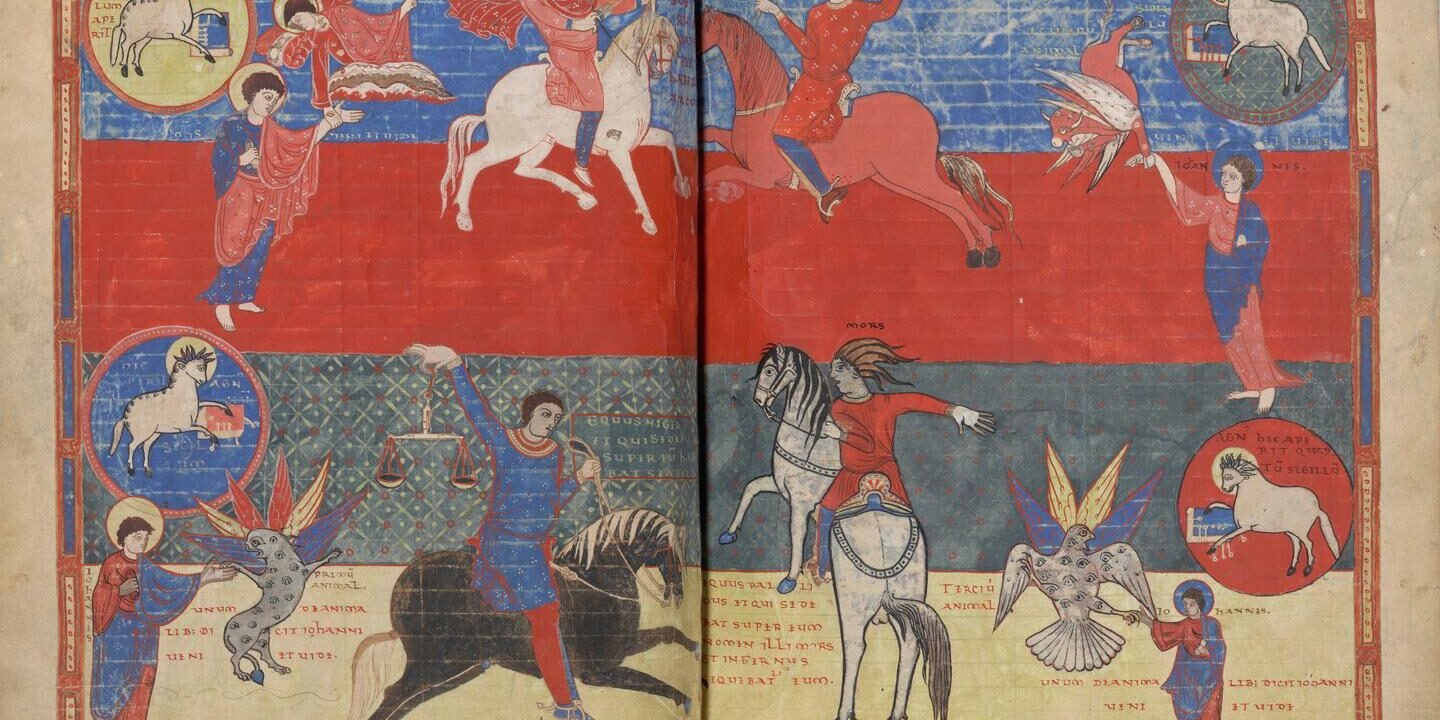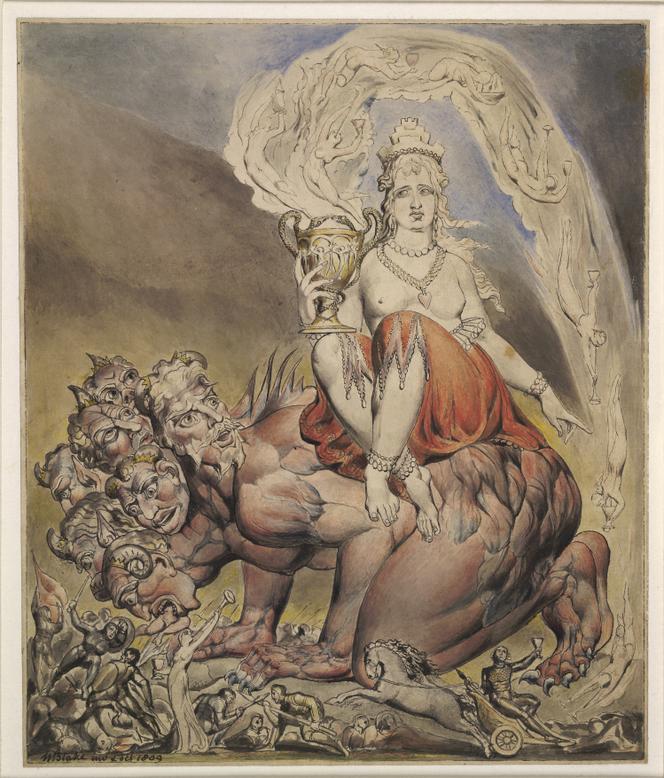

The Book of Revelation (also known as the Book of the Apocalypse) is an excellent subject for artists. The text by John of Patmos (written around 95) provides them with an abundance of attractive and frightening motifs: the Four Horsemen, the Angels whose trumpets herald disasters and, better still, these images: hail and blood, the burning of the sun, the invasion of darkness, scorpion-tailed locusts and the dragon, of course. He must be red, with seven heads and 10 horns, and lead armies of devils. There is also the sea beast, which must take after the panther, bear or lion, and another, no less monstrous, coming out of the earth, which marks men with the number of the beast, 666. And the great harlot: “The woman was dressed in purple and scarlet, and was glittering with gold, precious stones and pearls. She held a golden cup in her hand, filled with abominable things and the filth of her adulteries: The name written on her forehead was a mystery: ‘Babylon the great, the mother of prostitutes and of the abominations of the earth.'” She ended up burned and devoured.
The artistic success of The Book of Revelation has never wavered. The exhibition “Apocalypse: Yesterday and Tomorrow,” held at the Bibliothèque Nationale de France in Paris, provides abundant evidence of this, from the Saint-Sever Beatus, whose scarlet-dominated paintings date from the third quarter of the 11th century to Lars von Trier’s 2011 film Melancholia. The planet’s catastrophic current events suggest that history is set to continue, as confirmed by several contemporary creations, set against those of the Middle Ages or the 19th century.
You have 75.44% of this article left to read. The rest is for subscribers only.









